The use of birch tar in the garden and vegetable garden
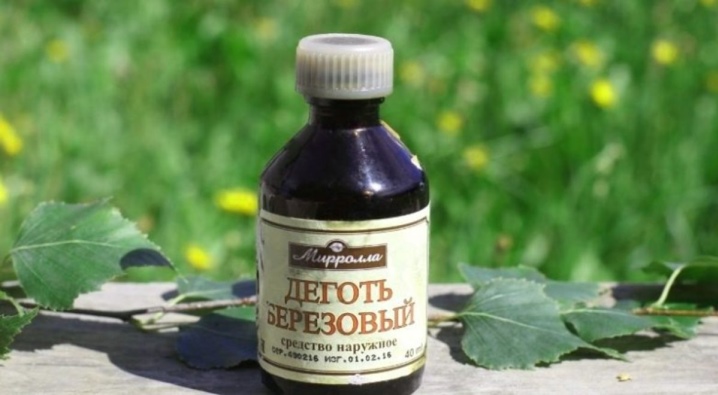
Birch tar is known as an irreplaceable natural remedy used in medicine, horticulture and horticulture. The extract from birch does not harm plants, since it does not accumulate in their cellular structure. At the same time, it successfully fights against many pests and diseases that attack green spaces.
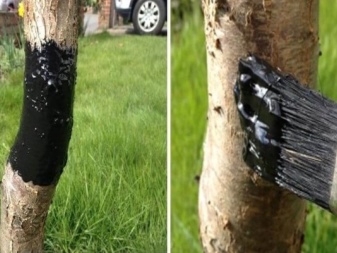

What is it used for?
Tar is a widely used and safe product that helps to improve the health of plants on the site and fruit trees in the garden. Produced industrially, two types are obtained - a birch substrate and a birch bark preparation. The first is an oily and tarry liquid with a pungent odor. "Russian resin" is made from knots and chips, elements of tree bark. Available in bottles of various capacities, from 15 to 100 ml.
The second remedy is obtained from the dead, cork layer of wood. The birch bark extract is not so concentrated, it does not have a persistent, pungent odor. The substance is used in cosmetology and for the production of medicines and soaps. The bar-shaped soap is packaged, and the mixed composition with surfactants is marketed as a universal detergent.
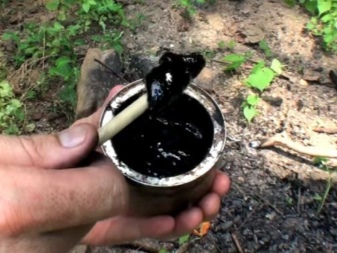
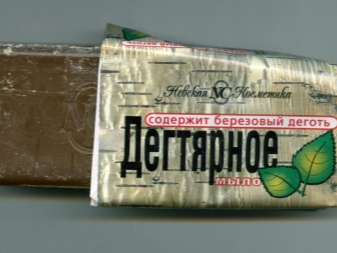
Tar components have an active antimicrobial effect on plant tissues, are effective against parasites and pests. This explains the widespread use of birch tar in gardening, in the country, in horticulture.
The active ingredient is rich in tannins, oils and alkaloids. Tar contains the following components.
- Phenol.
- Xylene.
- Toluene.
- Phytoncides.
- Acidic organic components.
- Resinous substances.
- Paraffin.
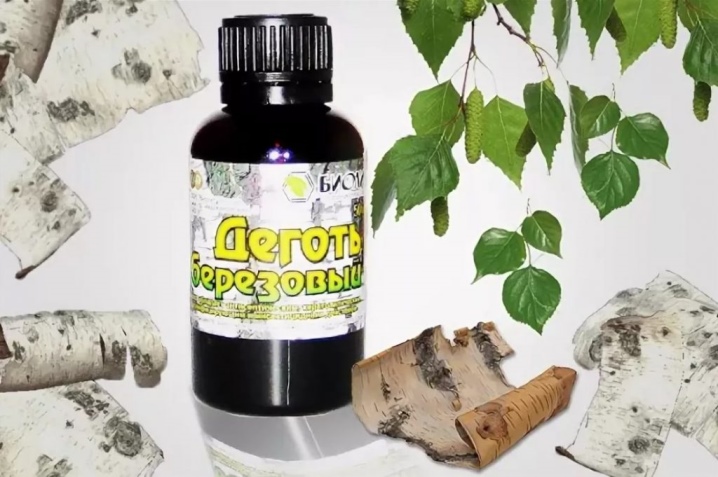
From disease
Bacteria and viruses, such as scab, can completely destroy the crop. A base solution is used against them with the addition of at least one and a half tablespoons of pure tar.
Shrubs and trees are processed, and the leaves during the period of appearance are coated with a mixture of a product with ash.

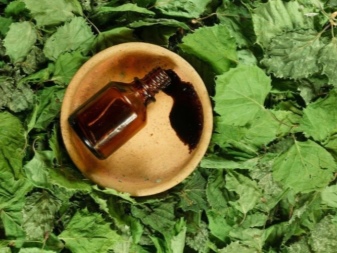
From pests
Pests cause a lot of concern to gardeners and gardeners. Practice shows that the components of birch tar are not liked by an impressive number of rodents, they are able to protect plants from many insects and parasites. Tar is excellent for the following pests.
- From the Colorado potato beetle. The gluttonous beetle settles on potato, eggplant and pepper plantations. He loves to eat nightshade leaves. They fight the pest in several ways - they water the bushes, spray them before flowering, during the appearance of buds and at the end of the period, so that a film of moisture forms on the leaves.
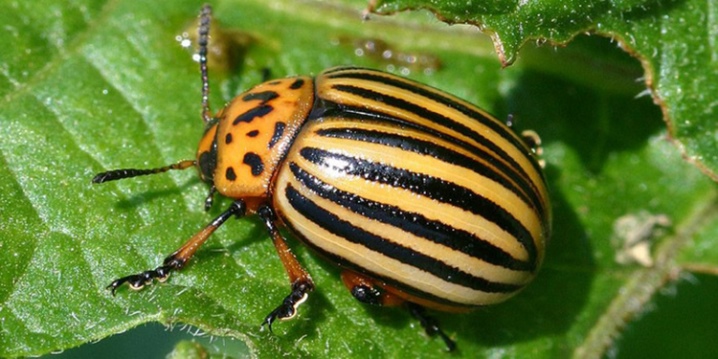
- From aphids. With the onset of heat, aphids bring huge losses to all living things on the site. To prevent the plants from dying, you need to act actively, driving away the parasite with a pungent odor. Plants are irrigated with tar solution at weekly intervals. A classic recipe with the addition of half a bar of soap and a fly in the ointment is suitable. The soap shavings are dissolved in a liter of hot water, mixed with the preparation and diluted with a bucket of plain water.
At the same time, they get rid of the constant companions of aphids - ants. The bases of trees and large branches are wrapped with rags soaked in concentrate.
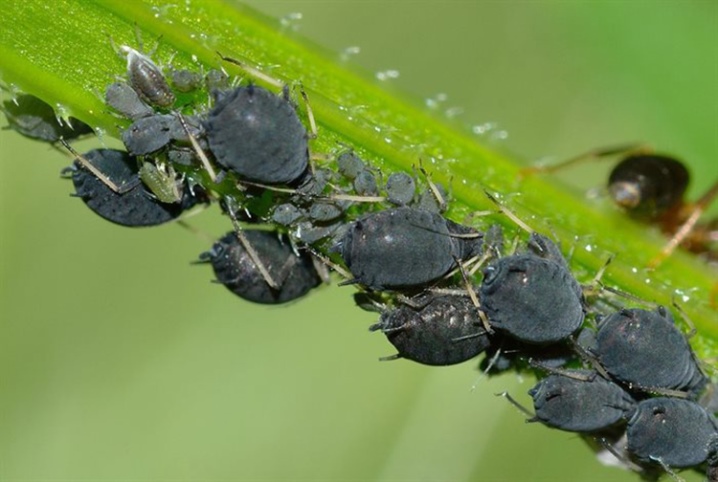
- From the bear. To defeat the insect, you need to pickle the planting material in advance. The tubers are thickly smeared with undiluted tar before being planted in the ground. When the sprouts have risen, they are additionally treated with a solution.
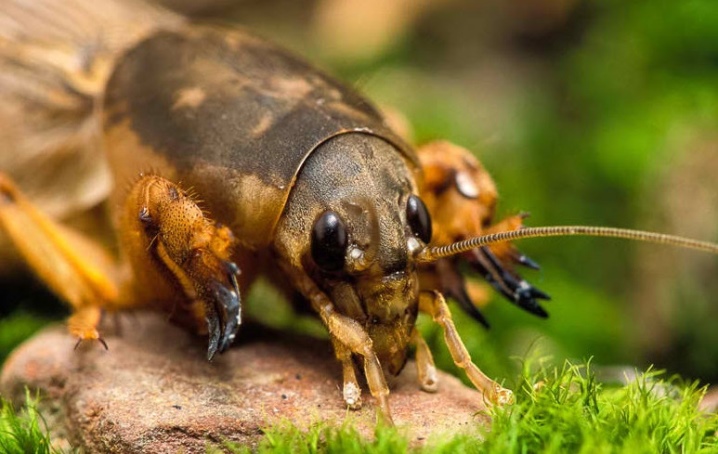
- From slugs. Molluscs not only spoil seedlings, shoots and stems, eat away fruits, but spread fungus and viral infections. Excess moisture in the lowlands helps their rapid reproduction.
Agronomists recommend constantly mulching with sawdust mixed with straw and coarse sand, with the addition of fragrant essence. Statistics show that this method significantly reduces the population of insatiable slugs.
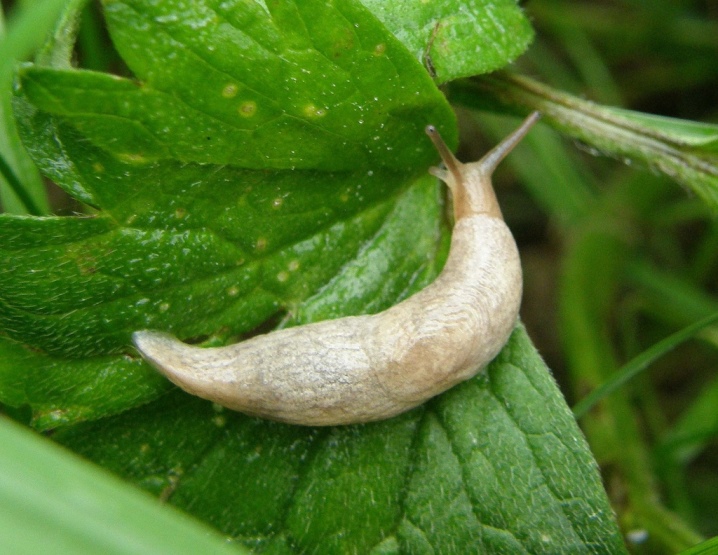
- From the carrot fly. Carrot flies spoil plants of the umbrella family. The fight against them begins with moistening the soil at the roots, followed by watering with a resinous liquid. Two tablespoons of the drug are diluted in a bucket of water. The procedure is carried out four times - twice in early summer and twice in August, maintaining an interval of 10 days between them.
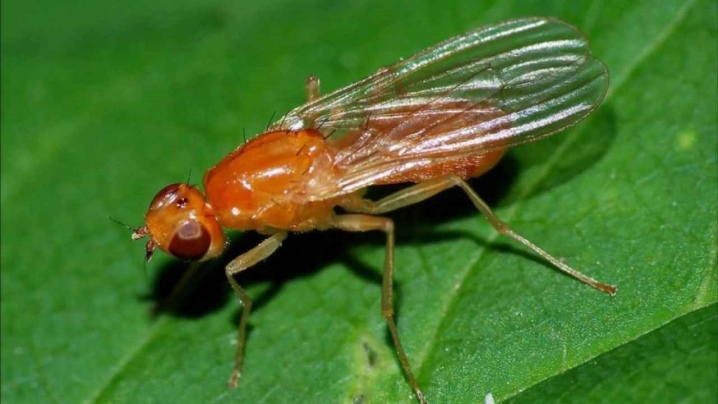
- From the cabbage flea. This is the name of small bouncing bugs that attack the garden quickly enough, eating holes in young leaves. This insect spoils vegetables from the cruciferous family - cabbage, radishes and radishes, they also come across in strawberry beds, flying out of the ground. Fleas reproduce quickly in the heat, but beetles are especially dangerous in early spring.
Arranged flags with adhesive tape with the addition of birch resin, spraying from a watering can with a solution of tar will come to the rescue.
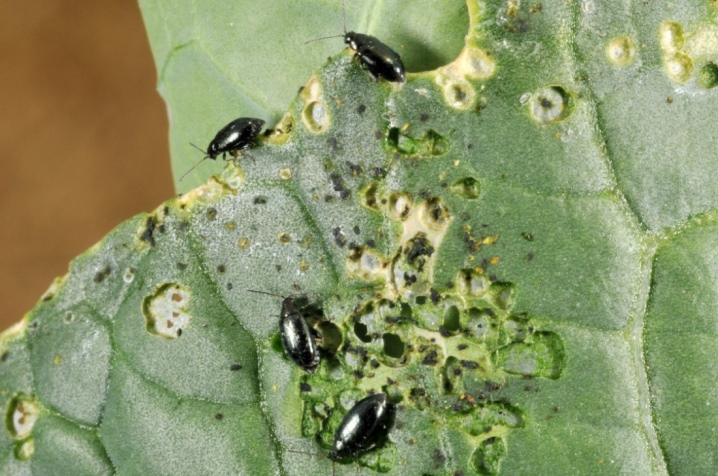
- From the weevil. If the ovaries dry up and the flowers turn black, then a raspberry weevil has settled in the garden. The parasite harms not only raspberry bushes, but also blackberries, strawberries, rose hips. Wetting the bushes with a liquid containing 10 liters of water with the addition of 40 g of soap and two tablespoons of the drug will help to destroy the weevil.
It is recommended to carry out processing during the budding period at least twice with a break of 6-7 days.
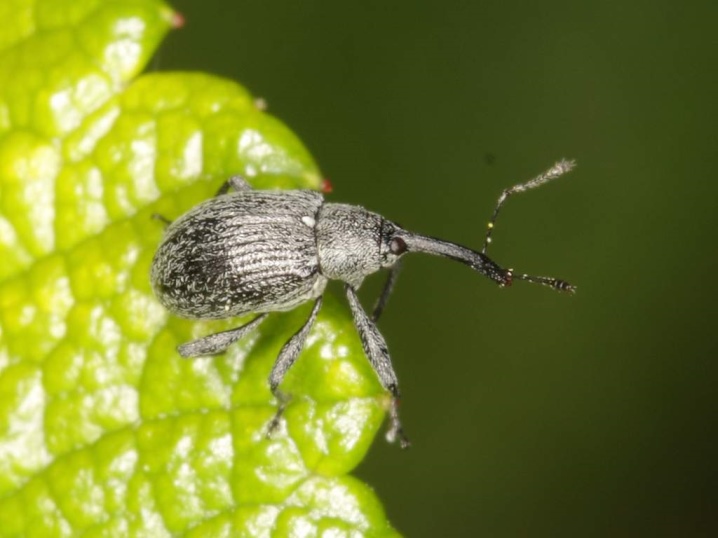
- Whitefly. In the greenhouse, when growing vegetables, one should beware of such a pest as the caterpillar of the butterfly whitefly. Small holes lead to spoilage of young leaves.
It should be fought by mulching, laying out the soaked sawdust. Rags with a strong smell of tar are hung between the rows at a height of half a meter.
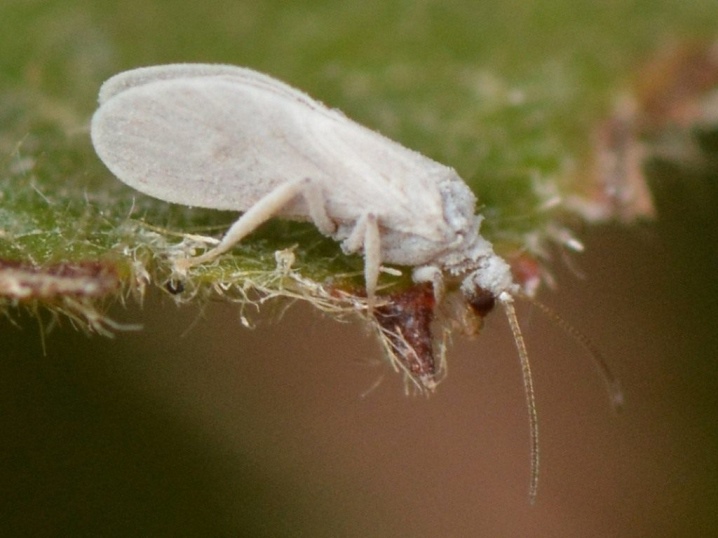
- From moles. Mammals undermine roots by making long passages in the soil. In order to drive the mole away, you need to find its hole, plug it and its holes with a thick-smelling rag and cover it with earth.
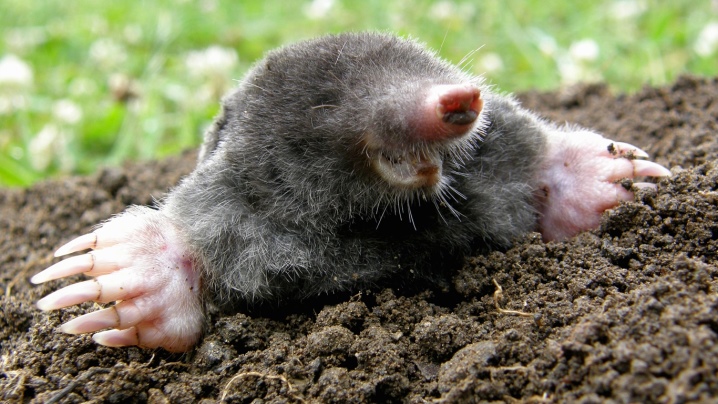
- From mice. Mice and hares love to feast on the bark of fruit trees and eat short shoots in the cold season. To combat rodents, the most reliable is to mulch the trunks with sawdust soaked in concentrate. The second proven method is to whitewash the trunk with a composition that includes a kilogram of chalk, a kilogram of manure and three tablespoons of tar per 8 liters of water.
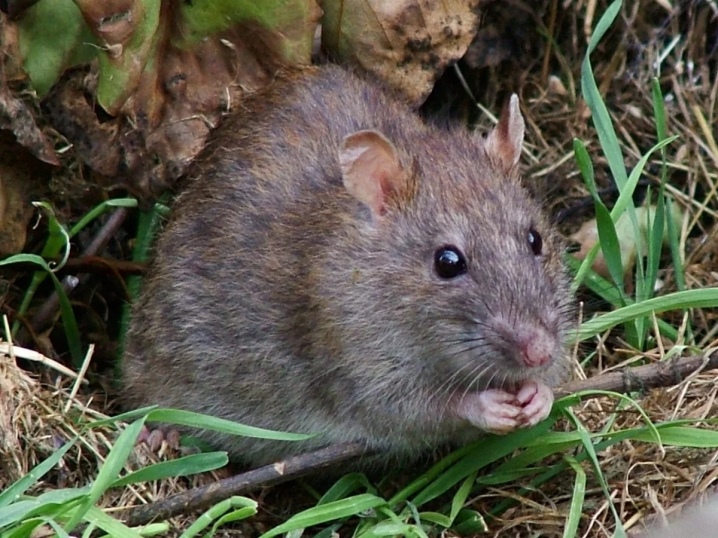
Advantages and disadvantages
Agriculture is an industry that requires plant health and safety. Taking care of the land and the plantings growing on it sooner or later requires the use of chemicals, which often have a strong effect. Sterile conditions cannot be created here. The owner of any home garden will need to feed and spray the plants in order to preserve the crop.
The choice depends on a number of factors, including the extent to which the site is infested with pests. Natural remedies, such as natural birch resin, are used first of all, since they are the safest and not poisonous, and they bring tangible benefits to the site.
When comparing birch tar to organic chemicals, there are a number of benefits. The birch preparation has been tested by many years of practice; for humans, the degree of toxicity is low.

The main properties are as follows.
- It affects a large group of pests - it is used against parasites and insects, as well as small mammals.
- Acts as a protective agent throughout the vegetative period, up to two months.
- Easy to make at home, no equipment or special skills required.
- It acts in various ways, including without contact with plantings.
- Does not become addictive with prolonged use.
- Forest dwellers who visit the site are not endangered, but only frightened off by an unpleasant smell.
The disadvantages of the resin are negligible when compared to the benefits. If the chemical is applied by spraying near fruit crops and green mass, the smell can be introduced into their taste.
In addition, the gardener needs to be prepared for the fact that bees will not fly into the garden, pollination of flowers and collection of nectar will not occur. Bees, like other beneficial insects, can react negatively to smell.
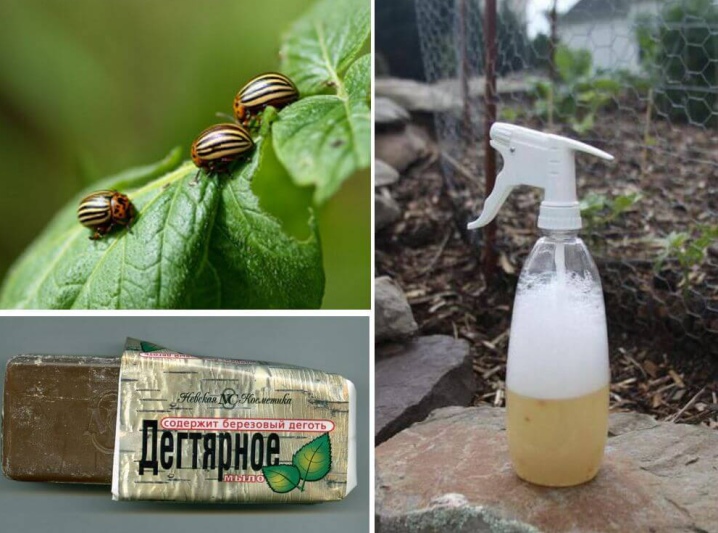
How to prepare the solution?
You can buy tar at a pharmacy, in a specialty store for gardeners, on the Internet. It is not a problem to purchase a small quantity. But if the infection on the site is significant, the substrate can be made independently. Of course, purchased tar will be more purified, and the effect will be higher, but homemade tar will also have a paralyzing effect on pests. Recipe for making tar at home.
- A hole is punched in the bottom of a large metal pan. The container is filled to the top with birch bark and chips, tightly covered with a lid.
- A small hole is made in the ground, a small container is placed there for the finished tar.
- A pan with birch bark is placed above it so that the prepared var will flow from the hole into the container.
- A large pot is covered with fuel and set on fire.
- After about five hours, the tar mass is collected. Practice shows that in order to obtain three kilograms of tar, at least ten kilograms of raw birch must be burned.
The classic solution is prepared according to the instructions. Two or three tablespoons of soap, liquid or household soap, must be diluted in a liter of hot water, then add a tablespoon of birch var. Dilute the resulting suspension additionally with a bucket of water. Working fluid for watering and spraying is ready.
You can water all types of crops with the solution - it is equally well suited for potatoes and onions, cabbage, strawberries and strawberries, carrots, fruit trees.
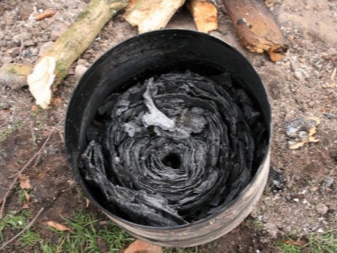
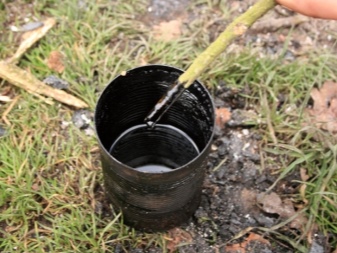
How can you use it?
For a product to be effective, it is important to use it correctly. Here are the basic methods that will help you get rid of intruders - insects and annoying rodents in your garden and garden.
Watering and dressing seeds
Since tar contains a significant amount of resinous substances and oils, the etching liquid is obtained by adding a solution of laundry soap. All components are mixed thoroughly, ensuring homogeneity. To 20 ml of base add 10 liters of water. Root seeds and bulbs are left in the emulsion for a few minutes, then they can be planted. For watering, a mixture of 25 ml of tar, 50 g of laundry soap is prepared, water is added in an amount of 6 liters. The liquid is poured into the pits during planting.
If potatoes are planted, at least a glass of suspension must be added to each hole. For root crops and onions, the pouring procedure is repeated after two weeks. About a liter of suspension is used per square meter of land.
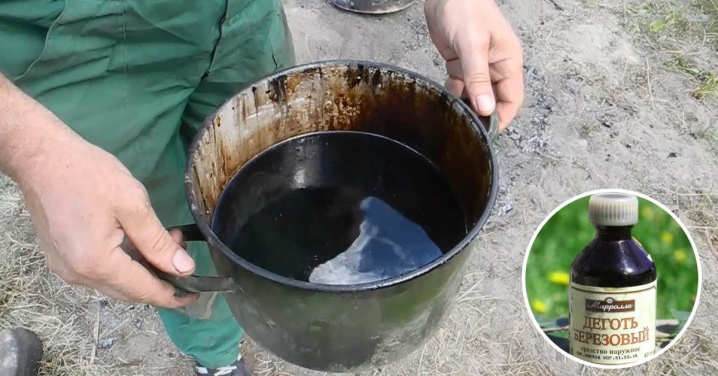
Irrigation
The water is heated almost to boiling water, soap shavings are dissolved in it (one piece of plain soap is taken). Mix thoroughly with a stick to prevent lumps, add the preparation to the bucket, dilute for spraying. The resulting suspension needs to be filtered so that plants can be treated with it. Pass through nylon or gauze. This procedure requires a spray bottle with a large nozzle.
It is undesirable to take expensive sprinklers with a narrow nozzle - tar drops will easily clog the hole. A wide brush will work to spray a small area.
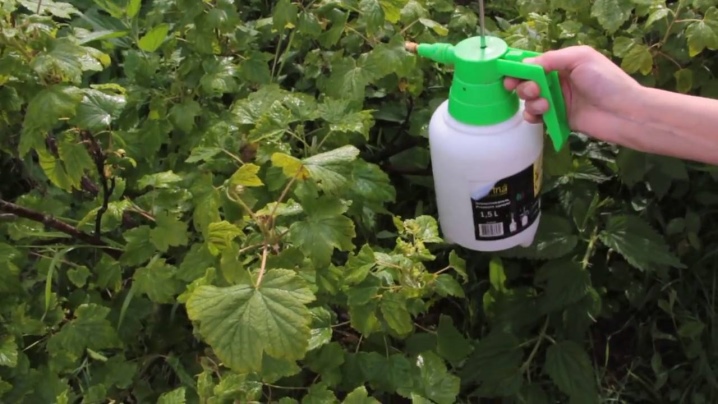
Staining and traps
The method allows you to process trees, well suited for the garden. The trunks are painted with a solution of lime mixed with birch resin. To prepare the product, you need a bucket of water, up to a kilogram of whitewash and 40 ml of tar. Treating trees keeps the bark intact, as rodents are afraid of the pungent smell and unusual taste.
They biochemically protect trees with trapping belts and mulching. Mulch is the material used to wrap the soil surface. It is made with organic waste such as compost, sawdust, shavings, dry leaves and bark, needles. Retains moisture and protects not only from weeds, but also from pests.
Sawdust is placed in a bucket of tar solution, after which they are placed around the tree trunk circles. This agrotechnical method works great with a strong parasitic infestation. The soaked sawdust is laid out between the beds with onions, carrots and cabbage. After the rains, the loose soil takes up some of the sawdust, and they need to be added.
Fishing belts provide reliable protection for shrubs and trees. An insect repellent belt is a 20-25 cm tape, consisting of several layers of burlap or thick paper, soaked in lime with a chemical, or simply tarred. Caterpillars get stuck in it, moths and weevils are destroyed.
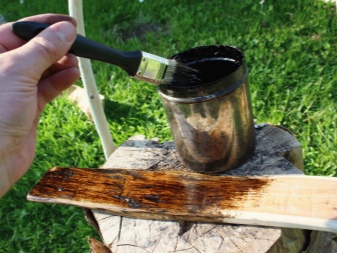
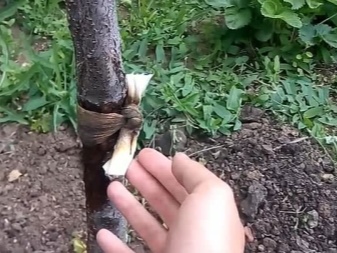
Evaporation and feeding
The non-contact method of struggle involves the placement of evaporators on the territory. Tin cans with holes exude a long-lasting scent of tar, which is impregnated with the fabric lying inside. They are pegged or simply placed in places where there are pests. Rags with tar are laid in holes, and sticks with rags are stuck into the ground along the entire site. This method scares away hares, moles, mice.
Rainwater does not dissolve or wash off the drug, the effect lasts for a long time. Periodically, rags are moistened in resin if they dry in the sun and wind. Wild strawberry and strawberry bushes are fed by diluting tar soap with ammonia and water. In the same way, they protect red and black currants, blackberries and raspberries, preventing pests from penetrating into the buds of berries. This should be done in the spring, when the flower stalks come out.
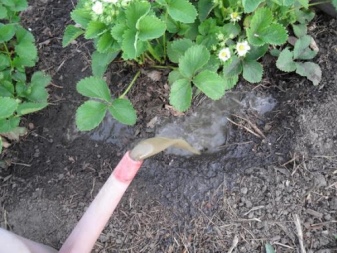

Useful Tips
- It is important to take into account that var from birch does not kill pests, but prevents their appearance or drives them away from shoots. Therefore, it is necessary to spray and process the bushes and leaves before the parasites attack.
- Processing is best done in dry and calm weather, if possible in the evening after sunset. You cannot do this in bright sun, so that the leaves do not turn black. If rain is expected, or if it has just passed, it is useless to waste energy on spraying, this also applies to the time after watering.
- During the use of suspensions with tar, it is necessary to periodically shake up the liquid, as the resin settles and the preparation stratifies. For this reason, the solution does not mix well with other components. The shelf life of the product is short, it is advisable to use it within two to three hours after preparation.
- Despite the low level of toxicity, it is dangerous to inhale vapors for a long time. If the drug enters the bronchi or stomach, poisoning is possible. Signs of intoxication are migraines and dizziness, nausea, vomiting, sweating, weakness. You need to immediately flush the stomach, take activated charcoal or other adsorbent, laxatives.
- Also, if the solution accidentally drops on the skin, you must immediately remove it with alcohol, and then rinse with soapy water. The mucous membranes are thoroughly washed with water. In case of eye damage and severe burning sensation, it is recommended to consult a doctor.
- If tar gets on clothes during spraying, it is difficult to wash it off with water. Therefore, you need special work clothes, a respirator and gloves.
- Store in a tightly closed glass container. Placed in a closet inaccessible to children, where there is no sunlight.
Heating and ignition of the resin must not be allowed; tar must also be mixed and diluted in strict accordance with the instructions.

For information on how to use birch tar in the garden, see the next video.










I treated the potatoes with a solution of birch tar, as advised, the solution was made stronger than advised. They do not smoke, they eat potatoes with a vengeance!)
The comment was sent successfully.